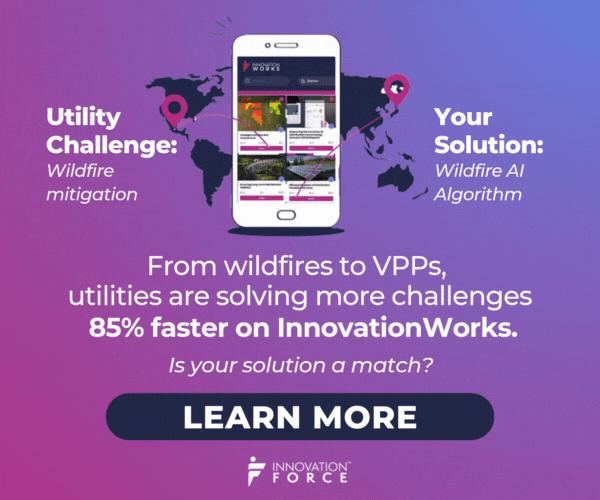The Detroit Power Outage brought eight hours of hardship to Detroit on December 2 -- hardship that could have been averted with microgrids.
Firefighters were forced to rescue people trapped in stalled elevators. Schools shut down at lunch time. The Detroit Free Press had harsh words for city leadership.
How would microgrids help?
First let’s look at why Detroit’s power system failed so badly. The power outage was triggered by a cable failure that took down an already weak system. Unfortunately, blackouts are not a new problem in Detroit.
- USA Today said blackouts occurred there in 2010, 2011 and 2013. CNN said the power has gone out during several sporting events.
- McKinsey and Company received funding in 2010 to study the city’s grid. They recommended $250 million of upgrades, according to Detroit Free Press.
- Detroit’s municipal electric system is like a long string of old Christmas lights, tweeted SNL Energy reporter Amy Poszywak after the outage occurred.
It’s important to note that Detroit isn’t the only U.S. city with a vulnerable power grid. December also brought news-making power outages to San Francisco and Washington, D.C. A storm-related blackout in San Francisco on December 11 left 100,000 homes and businesses without electricity. And on December 15, a blown transformer and construction accident led to power outages in key government buildings in the nation’s capital, including the State Department and the Federal Reserve. The lights even flickered in the White House.
The American Society of Civil Engineers has given the nation’s power infrastructure an overall grade of D+, saying many improvements are needed. The money isn’t always available, however, for massive upgrades.
How Microgrids Can Help
The frequency with which the grid goes dark is increasing in many places. When power goes out, everything grinds to a halt – unless local microgrids or generators are there to support critical facilities like transportation systems, hospitals, emergency services, and government buildings.
A microgrid is a local, customized electricity system that includes generation, storage and loads. A form of distributed energy, microgrids often derive power from solar panels, fuel cells, wind turbines, diesel, or combined heat and power (CHP).
In the United States, microgrids are usually connected to the centralized grid. But at times when local electricity is needed, the microgrid can be disconnected or ‘islanded’ from the centralized grid and can operate on its own, providing power to critical buildings when the grid cannot.
Why Financing Is Crucial
So why aren’t there more microgrids?
The microgrid industry has been developing gradually in North America and internationally. It is largely driven by military installations, climate resilience policies, off-grid communities, and the fuel costs of islands. Since Superstorm Sandy, interest in resilience has translated into heightened awareness of the need for microgrids.
However, many city leaders still do not yet fully understand the technology and its benefits and costs. Education is key.
Energy storage and microgrids are not as expensive as is commonly held; costs are falling. Lithium-ion batteries, which are ideal for microgrids, have dramatically dropped in cost as they have been commercialized. These costs will continue to come down with market expansion. Energy storage is already cost-effective in certain places.
It is taking time for financing to catch up with the opportunities that exist. There is some financing available for full off-grid systems and some for behind-the-meter systems. But microgrids are still considered high risk by investors. It is likely financing options will improve to catch up with the market during the next few years.
When Policy and Standards Align
Meanwhile, states like Connecticut, New Jersey, New York, and others are ramping up government incentives and policies to help the industry launch. At Princeton Power Systems, we are advocating for more coordination with stakeholders to create new codes and standards so states can coalesce around a more common approach.
We also are encouraging policymakers and regulators to require solar to be microgrid-ready. The deployment of solar is going to continue to expand during the coming decade. The idea of energy storage and microgrids will become more closely linked to solar than it has been in the past. To prepare for this and keep costs in check, we would like to see state policy and military policy specify that solar systems built now be compatible with microgrids. This would allow them to act as islanded systems and pair with energy storage.
If we’re going to put money into resiliency and reliability, we should focus on microgrids and distributed generation. It will make economic sense in more and more places as the years go by, especially in cities with aging electric infrastructure. By installing microgrids these cities can avoid becoming a cautionary tale like Detroit.
About the Author
 Darren Hammell graduated with honors from Princeton University with a B.S.E. in Computer Science. He took home top honors in the Princeton University Business Plan Contest and co-founded Princeton Power Systems in 2001 where he served as President and CEO until March 2009. From there he took on the responsibility of Executive Vice President of Business Development. He is currently Chief Strategy Officer.
Darren Hammell graduated with honors from Princeton University with a B.S.E. in Computer Science. He took home top honors in the Princeton University Business Plan Contest and co-founded Princeton Power Systems in 2001 where he served as President and CEO until March 2009. From there he took on the responsibility of Executive Vice President of Business Development. He is currently Chief Strategy Officer.








